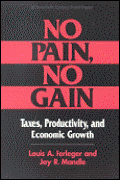Studies in this week’s Hutchins Roundup find that low-skilled immigration likely will continue to decline regardless of U.S. immigration policy, using tighter monetary policy to counteract excess growth may be costlier than previously thought, and more.
Want to receive the Hutchins Roundup as an email? Sign up here to get it in your inbox every Thursday.
Low-skilled immigration probably will continue to decline regardless of U.S. immigration policy
Using population data on various Western Hemisphere countries from 1970-2015, Gordon Hanson, Chen Liu, and Craig McIntosh from the University of California, San Diego, construct a model to predict future inflows of low-skilled workers. They find that stricter enforcement of U.S. illegal immigration policies and conditions in migrant-sending countries, including improved macroeconomic performance and slower labor supply growth, contributed to the decline in low-skilled U.S. immigration after 2008. Because the population of young Latin Americans is projected to drop over the next couple of decades, immigration of young low-skilled labor to the U.S. probably will continue to decline whether or not U.S. immigration policies tighten, they argue.
The costs of “leaning against the wind” are larger than the benefits
Whether central banks should use monetary policy to counteract risks to financial stability—known as “leaning against the wind”—is a subject of intense debate. Lars Svensson of the Stockholm School of Economics notes that such a policy has potential benefits—such as less frequent financial crises—but also potential costs, including a weaker economy with higher unemployment and lower inflation. He argues that previous research has focused only on the costs of a weaker economy assuming that a crisis is avoided. However, the negative economic effects of leaning against the wind are even larger when a crisis does occur because it hits an economy that is weaker than it otherwise would have been, he explains. Accounting for these costs, Svensson finds that the downsides of leaning against the wind substantially outweigh the benefits.
Poor childhood health associated with poor adult outcomes
Using data from the British Household Panel Survey for individuals born between 1935 and 1950, Jeffrey Schiman of Georgia Southern University and co-authors at the University of Illinois exploit variations in infant mortality during World War II to examine the relationship between childhood health and adult well-being. They compare adult outcomes of children born at the beginning of the war, when infant mortality was high due to wartime food rationing and unusually harsh winters, with adult outcomes of children born after 1942, when infant mortality was lower because of priority rationing for pregnant women, milder winters, and improvement in child healthcare services. They find that an 11.8 percentage point increase in infant mortality is associated with a 39 percent increase in reported disability in adulthood, a 17 percent decrease in the probability of being employed, and a 21 percent decrease in annual income. These effects grow stronger later in life, particularly after age 60, they say.
Chart of the Week: A growing number of part-timers prefer part-time work
Quote of the week:
How much does productivity growth matter? The basic answer: simple arithmetic says it matters a lot. If labor productivity grows an average of 2 percent per year, average living standards for our children’s generation will be twice what we experienced. If labor productivity grows an average of 1 percent per year, the difference is dramatic: Living standards will take two generations to double,” says Fed Vice Chair Stanley Fischer.
“But fortunately, when it comes to productivity, we are not simply consigned to luck or to fate. Governments can take sensible actions to promote more rapid productivity growth. Broadly speaking, government policy works best when it can address a need that the private sector neglects, including investment in basic research, infrastructure, early childhood education, schooling, and public health. Reasonable people can disagree about the right way forward, but if we as a society are to succeed, we need to follow policies that will support and advance productivity growth. That is easier said than done. But it can be done.”











Commentary
Hutchins Roundup: Declining low-skilled immigration, counteracting excess growth, and more
September 7, 2017